One of the hallmarks of high-quality wood for all types of woodworking projects is its resistance to rot. This is very important for many skilled woodworkers because they do not want bacteria to eat their products, which they make with great effort! Also, many people are looking for a list of rot-resistant woods for outdoor projects. Because wood rot can lead to a number of structural problems and not paying attention to this issue can cause a lot of financial losses. All of this led us to write this article. The rot-resistant wood chart you will find here will be the answer to all these searches and questions.
What is Wood Rot?
The meaning of wood rot is that wood is to suffer decomposition due to biological action, especially by fungi or bacteria. In addition to insects such as termites that eat wood also cause wood decay. See Animals That Eat Wood.
But it can be said that fungi are the main cause of wood rot. These fungi grow in humid environments. Therefore, as long as the wood remains dry, it will rot less.
A Scale for Measuring the Resistance of Wood to Rot
Different species of wood do not have the same resistance to rot. Some species are naturally rot-resistant due to complex chemical compounds. These species due to environmental conditions evolved to protect themselves against decay. Also, some species of wood that are naturally less exposed to pests are less resistant to rot.
Unfortunately, there is no standard scale for measuring the resistance of wood to rot. The resistance of wood to rot is often considered to be synonymous with its duration, so more duration is synonymous with greater resistance. With these explanations, it is clear that the resistance of wood to decay is a qualitative parameter.
Rot-Resistant Wood Chart – Table
Here we have prepared a chart for you that shows the rot resistant/very-resistant woods in order. Therefore, all the woods on this list are highly resistant to decay and can be used for outdoor projects.
This table lists the species that are better known. There are definitely woods that may be more resistant to rot and are not on this table.
Lichtenberg Wood Burning eBook

Download Lichtenberg Wood Burning eBook
One of the modern techniques for creating wooden artwork is called Lichtenberg wood Burning. In this eBook, we are going to introduce this newfound art to you.
This technique is known with some different names such as Lichtenberg wood burning, fractal wood burning, and electricity wood art.
This technique should not be confused with wood burning art or pyrography. The art of pyrography on wood is the art of creating motifs and designs by burning with hot metal tools on objects such as wooden surfaces.
Lichtenberg burning is a wood-burning technique for creating designs with electricity.
This eBook is a comprehensive guide on Lichtenberg Wood Burning. All you need to know for Lichtenberg Wood Burning is here.
This is a limited-time offer, order now to get access to the future eBook releases.
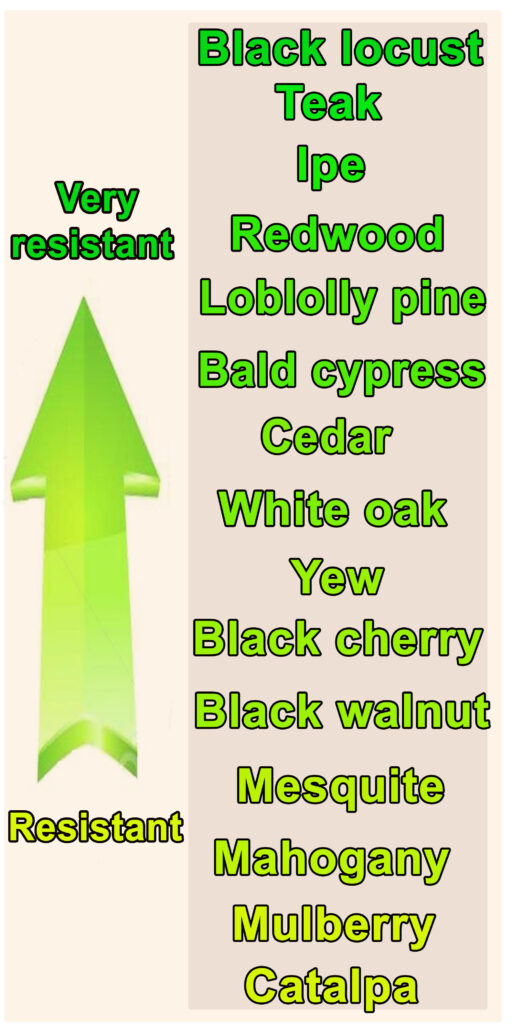
As mentioned above, there is no scale to measure wood’s resistance to decay. Therefore, in most sources and articles, qualitative descriptions have been used to determine the degree of resistance of wood to rot.
For example, in the following link, you will see a table that divides wood into three categories in terms of decay resistance: resistant and very resistant, moderately resistant, and nonresistant.
https://robidecking.com/wp-content/uploads/2017/01/USDA-rot.pdf
Note that most of the research that has been done in this regard is on the heartwood area.
Rot-Resistant Wood Filter
You can filter wood types for decay resistance. For this purpose, refer to the “wood filter” menu on wood-database.com.
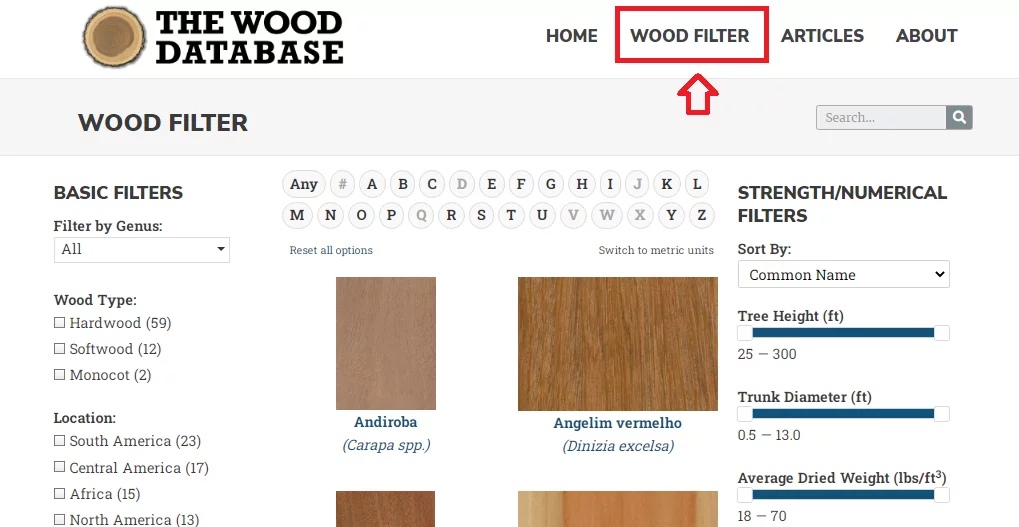
There you can filter different types of wood from very resistant to perishable (picture below).
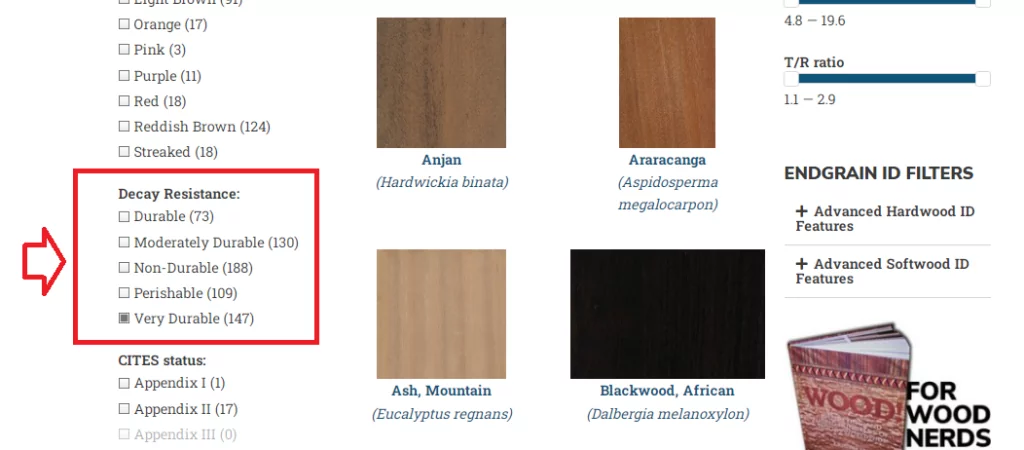
You can also filter your search by location.
Conclusion
In this article, we first try to give a correct definition of “wood decay”. Woods contain cellulose and this can expose them to pests, insects, fungi, and bacteria.
See What is Wood Made of.
So naturally, there is no wood that will never rot!
In this article, you also saw a chart in which common rot-resistant woods are sorted. Among them, we can mention black walnut, redwood, cedarwood, white oak, black cherry, and cypress wood.
You should know wood species that are naturally highly resistant to decay are usually rare and expensive. Therefore, treated wood can be a good alternative. Pressure-treated wood is wood that has been infused with a preservative to protect it from rot and insects.

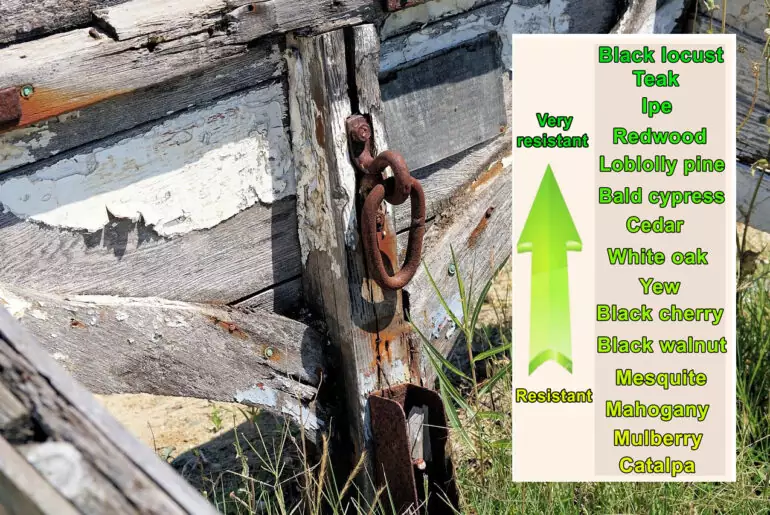
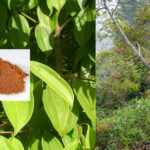
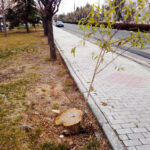


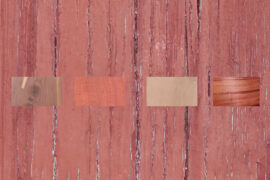
Comments
Pingback: 4 Pink Colored Woods - Wood Dad